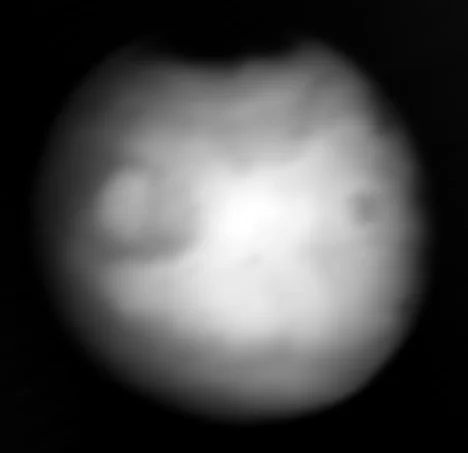
Europa Clipper’s Mars Flyby: Infrared Images Offer a Glimpse into Future Europa Exploration
NASA's Europa Clipper, en route to Jupiter's moon Europa, recently used a flyby of Mars to calibrate its infrared imaging instrument, E-THEMIS, providing valuable data and stunning visuals. This strategic maneuver not only adjusted the spacecraft's trajectory but also allowed for critical testing of its instruments, ensuring they are ready for the demanding task of exploring Europa's icy ocean world.
The Mars flyby on March 1st, which brought Europa Clipper within 550 miles of the Red Planet, was more than just a course correction. It provided a unique opportunity to test the spacecraft's Europa Thermal Imaging System (E-THEMIS). This infrared camera will eventually be crucial in mapping temperature variations on Europa's surface, helping scientists locate active areas and understand the geology beneath the ice. 
"We wanted no surprises in these new images," said Phil Christensen of Arizona State University, principal investigator of E-THEMIS. "The goal was to capture imagery of a planetary body we know extraordinarily well and make sure the dataset looks exactly the way it should, based on 20 years of instruments documenting Mars." This involved comparing the new E-THEMIS images to data from NASA’s Mars Odyssey orbiter, which carries a similar instrument, THEMIS.
The data collected during the flyby included over a thousand grayscale images captured in just 18 minutes. These images were then combined to create composite color visuals, where warmer regions are depicted in red and colder areas in blue. These visualizations offer a tangible demonstration of the instrument's capabilities and confirm its readiness for the primary mission at Europa. One notable image shows a detailed thermal map of Mars, revealing temperature variations from the warm equatorial regions to the frigid polar ice caps.
Beyond E-THEMIS, the flyby also served to test Europa Clipper's radar instrument and telecommunications equipment. The successful radar test was particularly important because the instrument's size made full testing on Earth impossible. Furthermore, by transmitting signals through Mars’ gravity field, the team confirmed that similar gravity experiments can be conducted at Europa. 
The Europa Clipper mission, launched on October 14, 2024, aims to determine the thickness of Europa’s icy shell, investigate its composition, and characterize its geology. Scientists believe that beneath Europa’s icy surface lies a global ocean, making it a prime target in the search for life beyond Earth.
With the successful Mars flyby behind it, Europa Clipper is now preparing for its next gravity assist from Earth in 2026, setting the stage for its arrival at Jupiter in 2030. The mission’s detailed exploration of Europa promises to revolutionize our understanding of the potential for habitable worlds elsewhere in the solar system. Will Europa hold the key to unlocking life beyond Earth? Share your thoughts in the comments below!